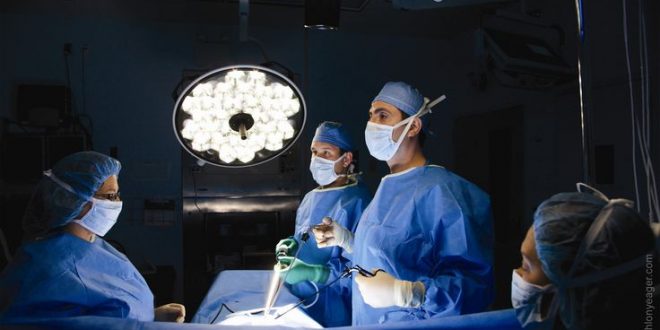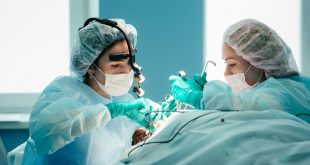Tissue expansion is a procedure of creating new skin from old skin as it enables the body to “grow” extra skin for use in reconstructing almost any part of the body. It is most commonly used for breast reconstruction as well as repair skin damaged by birth defects, accidents, surgery, and certain cosmetic procedures. The ‘extra’ skin generated form this procedure can also be used for repairing burns, scars and large birthmarks, for example, hairy naevi (moles). Actually, this method is particularly useful for hairy areas like the scalp, as the ‘extra’ skin will still be able to grow hair. As it happens, the new skin contains blood capillaries and the nerve endings that are also needed for sensation.
The Procedure
Since tissue expansion is a method of allowing the body to ‘grow’ more skin to be used it to reconstruct a part of the body, then it works by stretching the skin rather. Just imagine how t is like when pregnancy stretches a woman’s abdomen. In the same way, a special bag is placed under the skin and is gradually filled with fluid over a period of weeks or months. Usually, this bag is a silicone balloon expander that is inserted under the skin near the area to be repaired.
This procedure is generally preferred by many because the results of tissue expansion are superior to other methods used to reconstruct or repair damaged skin. The result of the procedure produces skin that is most likely to be a good match for the color and texture of the patient’s existing skin.
The procedure operates under the principle that keeping living tissues under tension causes new cells to form and the amount of tissue to increase. By far the most common method is when the surgeon inserts the balloon expander beneath the skin and periodically, over weeks or months, injects a saline solution to expand the overlaying skin. Be informed that this growth of tissue is permanent. This is why, in Breast reconstruction surgery, for example, you can use this technique when the mammary gland was removed by surgery (radical mastectomy). After this, a more permanent artificial implant or a silicone breast implant, is inserted under the permanent expanded pouch of skin. However, in other applications, it can also be that excess skin is grown purposely by expansion on the back or the buttocks, so that it can be harvested later for transplantation to another site. Usually the excess skin is needed on where skin was lost due to trauma, extensive wounds, surgery, burns, and etc. A dermatome is a device that is used to slice thin strips of skin from the expanded area and which is later closed by suturing it.
With all of this ado, just keep in mind that although the goal of this procedure is improvement, it is not realistic to aim for perfection. However, for most tissue expansion patients, the procedure dramatically improves their appearance and quality of life after the surgery. So, if you’re physically healthy, psychologically stable, and realistic in your expectations, then go ahead and go under this procedure if you think you really need it. After everything, you’ll probably be quite pleased with your new look, and feel good about it too.
Tissue Expansion Advantages
Tissue expansion provides an added technique with several advantages compared to the rest for it offers a near-perfect match of color, texture, and hair-bearing qualities of your normal skin. Also, because the skin remains connected to the donor area’s blood and nerve supply then there is a smaller risk that it will die. With this procedure also, scars are often less apparent because the skin doesn’t have to be moved from one area to another.
As for anesthesia, your surgeon may use local anesthesia, combined with a sedative to make you drowsy. In this medication, you’ll be awake but relaxed, and should feel little discomfort. Or, your surgeon can recommend the use of a general anesthesia, where you’ll sleep through the entire operation.
Tissue Expansion Risks
Skin expansion’s most significant drawback is probably the length of time required to grow additional skin. Usually, tissue expansion can take as long as three to four months and during this time, the expander creates an unsightly bulge. Additionally, the procedure also requires repeated visits to the surgeon for the injection of the salt water.
Also, as with any operation, there are risks associated with surgery such as when the silicone expander used in the procedure will break or leak while it is in the body. That is why these expanders should be rigorously tested and placed with care. However, leaks do occur. But this causes no harm for if the expander should leak, the salt-water solution that was used to fill the expander is harmlessly absorbed by your system and the expander can be replaced in a relatively minor surgical procedure. There is also the small risk of infection and bleeding that is following the operation to insert the tissue expander.
On the other hand, although tissue expansion generally produces excellent results when reconstructing some areas of the face and neck, the hands, arms, and legs, it is more difficult on the back, torso, or other areas where skin is thick. Also, if the affected area is severely damaged or scarred, expansion is not an option since healthy skin is the first requirement in undergoing this procedure.
After your surgery
The discomfort that you experience during the surgery will improve rapidly during the first 24 to 48 hours after your procedure. The doctor should prescribe you pain medication to alleviate much of your discomfort, still, expect to feel a bit tired from the anesthesia and some soreness too in the area of your incision.
If you want to resume again to your normal routine, ask your doctor. These things depend on the length, complexity and type of surgery you’ve had. Such as for example, for breast reconstruction patients having tissue expansion, normal activity can resume in two to four days. As for most tissue expansion patients, they find they can keep up with their normal routine while the expander is in place, so this is a matter of personal taste. Just take into consideration and be careful about bumping the area that holds the expander. Usually, following the second surgery, most patients are up and about within a week.
Normally, drains are removed one to two days after surgery and you can take a shower or bath once these are removed. You can also go back to work or school one week after surgery and even try driving right within a week after surgery. Actually, you can most likely return to any work in about a week following your surgery to remove the expander and reposition the tissue or insert an implant. The stitches are removed ten to fourteen days after surgery and strenuous activity is only allowed three to six weeks after surgery. As for fading of scars, this might take several months to one year. Most scars will fade substantially over time though for some it may take one or two years for them to become much less visible.
 Lesbian, Gay, Bisexual, Transgender & Intersex News Lesbian News, Gay News, Bisexual News, Transgender News, Intersex News, LGBTI News
Lesbian, Gay, Bisexual, Transgender & Intersex News Lesbian News, Gay News, Bisexual News, Transgender News, Intersex News, LGBTI News




